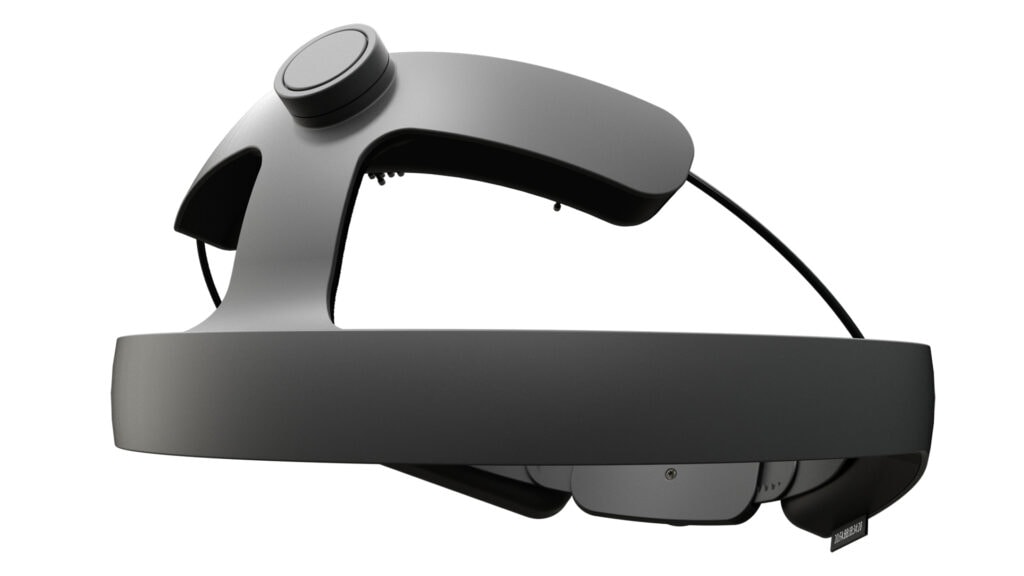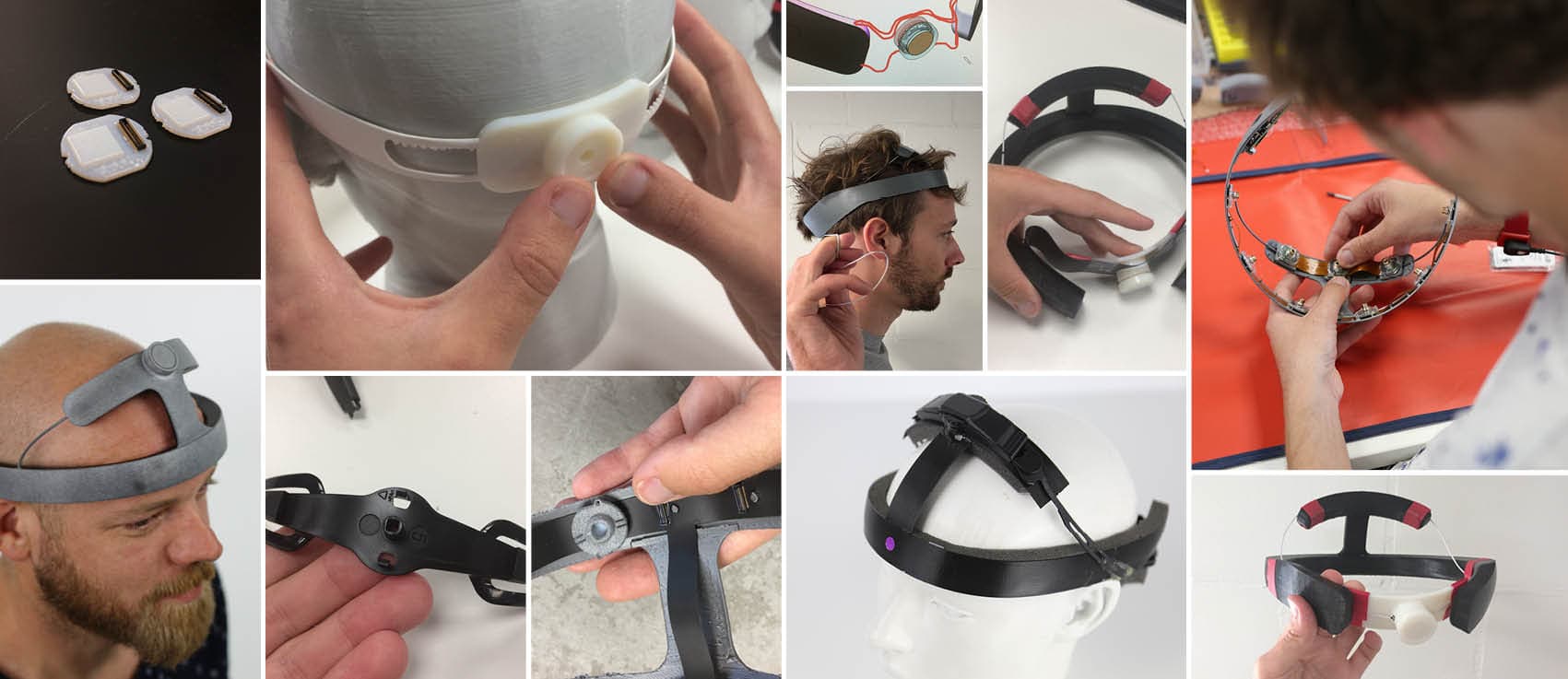
The headset measures brain activity via EEG technology through electrodes. Via wireless connection with bluetooth, the information can be analyzed in imec’s data analytics platform.
The refined design of the headset derived from its predecessor The Brain Melody. However, the new design has several new requirements, the main one being the user group. Mood 8 is specially designed for the Korean population. For the correct dimensions of the human head, we performed an extensive anthropometric study. This has resulted in new adjustability requirements and optimized electrode placement.
Imec’s design strategy is to develop highly professional wearables with an optimal consumer experience in terms of look & feel. Mood 8 is a sequel to the already successful designed series of the EEG Headset. With a new consumer centric approach, we succeeded in the challenge of designing this product within imec’s existing corporate identity.
The product is developed to fit the majority of the Korean population due to the optimized adjustability and ergonomics within the design. The study around the anthropometric data provided the fundamental baseline for the design to assure that the electrodes always come in contact with the user’s head. Aside from the functional aspects additional requirements related to cleanability, user-friendliness and robustness, were taken into account as well

With the extensive use of our 3D printers, we were able to quickly and effectively make prototypes in the required flexible materials. One of the engineering challenges was to integrate a flexible PCB withing the housing and still guarantee maximum comfort and optimal signal quality.
